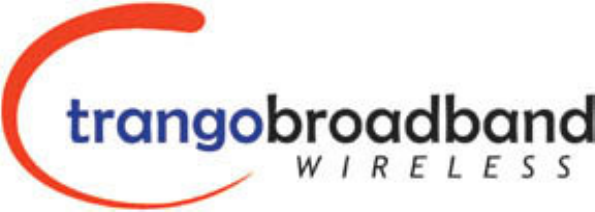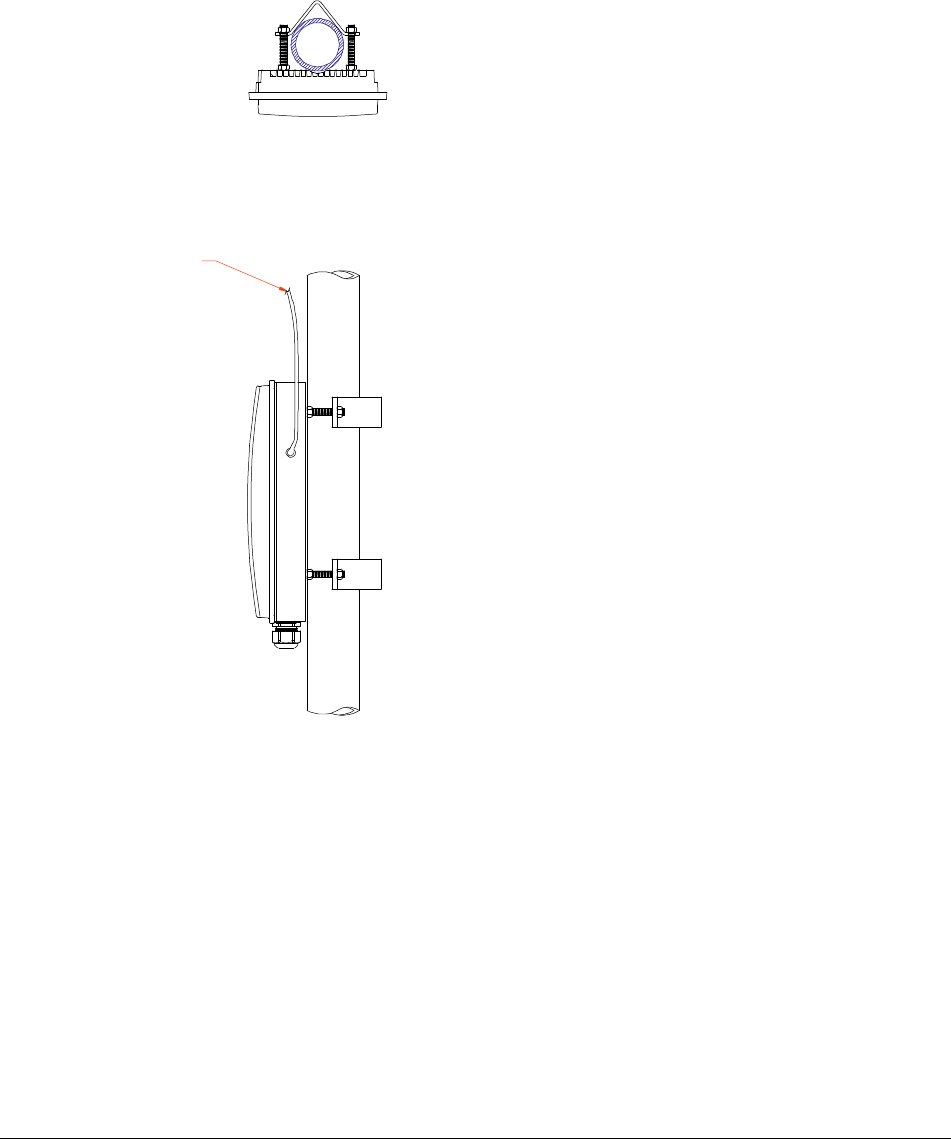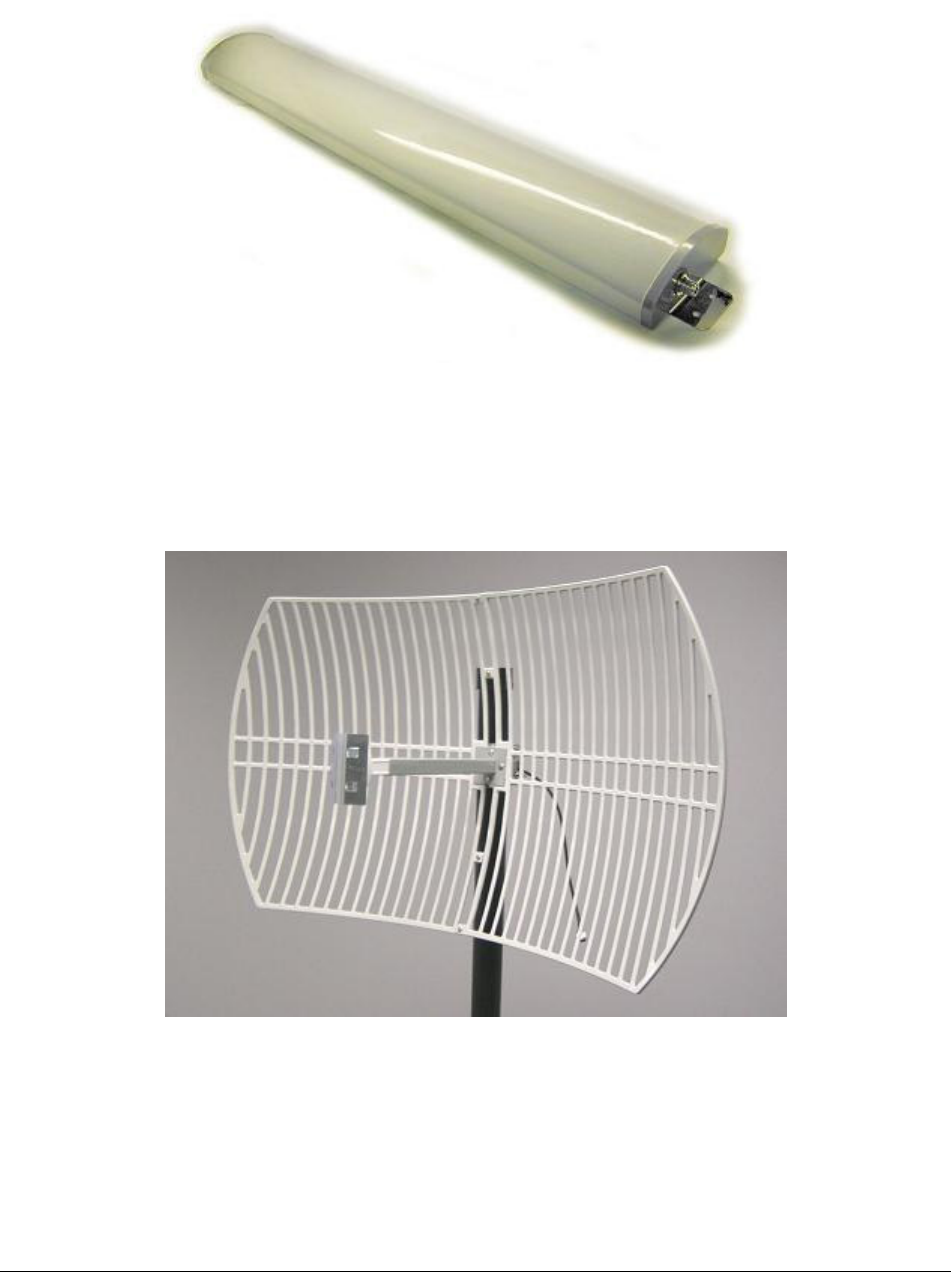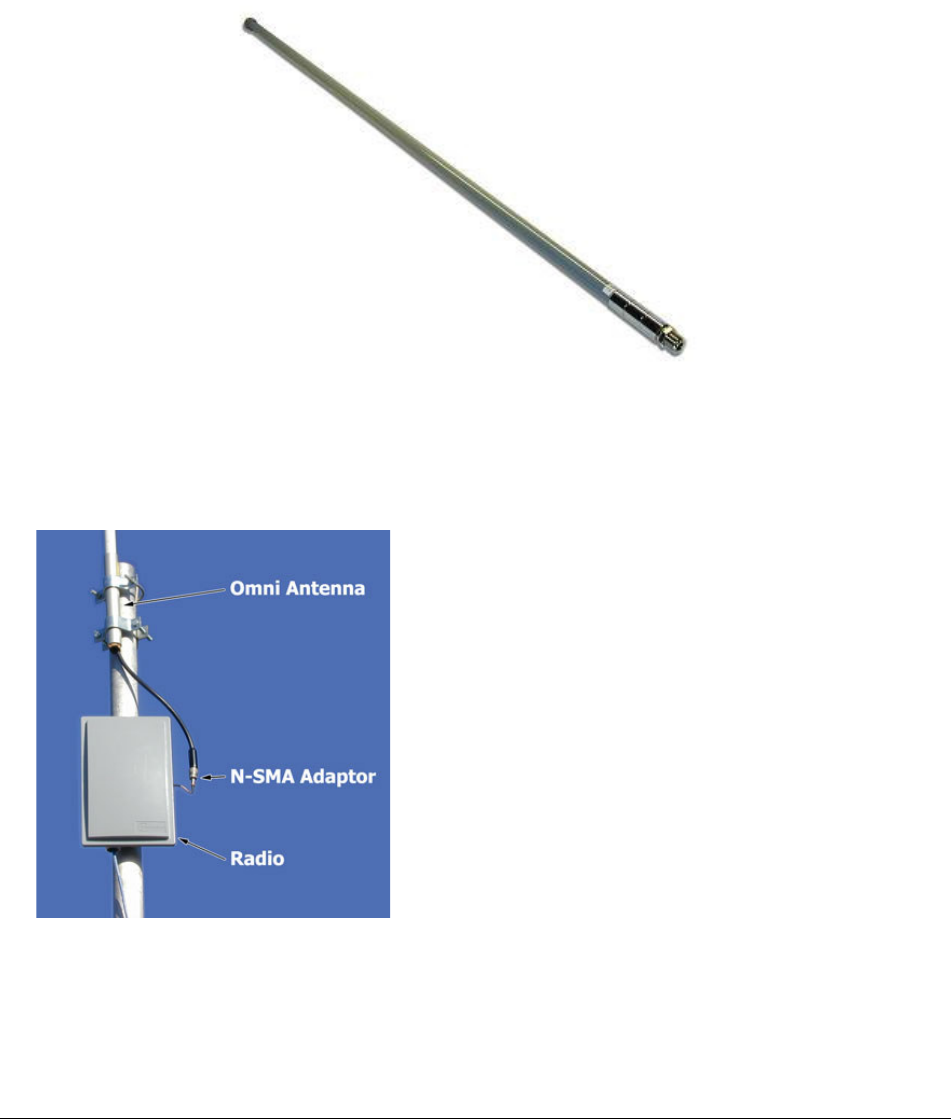Trango Systems M2400S 2.4 GHz Wireless Broadband System User Manual M2400S ProInstallGuide DRAFT
Trango Systems Inc 2.4 GHz Wireless Broadband System M2400S ProInstallGuide DRAFT
Contents
- 1. installation guide
- 2. user
installation guide

!"
#$%
&

Preface
Trango Broadband Wireless — Professional Installation Guide Rev A Page ii
Preface
This manual covers configuration and installation of the optional external antennas for use with the
M2400S Access Point M2400S-AP and Subscriber Unit M2400S-SU. Since this device requires manual
power limit settings for use with the higher gain antennas, it is classified by the FCC as a professional
install device. To be in compliance with FCC requirements, the radio must be installed with one of
several approved antennas listed in this document.
The M2400S-SU subscriber unit (SU) works in conjunction with the M2400S-AP access point. Please
see the M2400S User Manual for general information on overall system implementation, configuration,
and management of the access point. The M2400S User Manual also covers many important aspects of
subscriber unit configuration and management.
FCC Information
This device complies with Part 15 of FCC Rules and Regulations. Operation is subject to the following
two conditions: (1) This device may not cause harmful interference and (2) this device must accept any
interference received, including interference that may cause undesired operation.
This equipment has been tested and found to comply with the limits for a Class B digital device, pursuant
to Part 15 of the FCC Rules. These limits are designed to provide reasonable protection against harmful
interference in a residential installation. This equipment generates, uses, and can radiate radio-
frequency energy and, if not installed and used in accordance with these instructions, may cause harmful
interference to radio communications. However, there is no guarantee that interference will not occur in
any particular installation. If this equipment does cause harmful interference to radio or television
reception, which can be determined by turning the equipment off and on, the user is encouraged to
correct the interference by one of more of the following measures:
1) Reorient the antenna;
2) Increase the separation between the affected equipment and the unit;
3) Connect the affected equipment to a power outlet on a different circuit from that which the receiver is
connected to;
4) Consult the dealer and/or experienced radio/TV technician for help.
FCC ID: NCYM2400S
Canada: TBD
IMPORTANT NOTE: Intentional or unintentional changes or modifications must not be made unless
under the express consent of the party responsible for compliance. Any such modifications could void
the user’s authority to operate the equipment and will void the manufacturer’s warranty. To comply with
FCC RF exposure requirements, the following antenna installation and device operating configurations
must be satisfied. The antenna for this unit must be fixed and mounted on outdoor permanent structures
with a separation distance of at least two meters from all persons. Furthermore, it must not be co-located
or operating in conjunction with any other antenna or transmitter.
Warranty Information
Radios from Trango Broadband Wireless are warranted from one year from date of purchase. Please
see www.trangobroadband.com for complete description of warranty coverage and limitations.
Firmware Notifications
To receive email notifications regarding firmware upgrades and product announcements, register at
http://www.trangobroadband.com/mailinglist/mailingListAdd.aspx

Trango Broadband Wireless — M2400S Professional Installation Guide Rev. A Draft Page
1
Section 1 General Information
Contents
Each SU or AP radio comes equipped with an internal dual polarization antenna, a power-over-Ethernet
(POE) J-Box, an AC adapter, and mounting hardware for pole mounting. The radio also has one
reverse-polarity SMA connector on the side for attachment to an external antenna. The MAC ID and
Serial # are printed on a label on the back of the radio.
Connections
See M2400S User Manual for detailed diagram for connecting radio to network or PC utilizing the power
over Ethernet (PoE) J-Box cat-5 cables.
NOTE: DO NOT APPLY DC POWER TO THE M2400S-SU or M2400S-AP UNTIL THE ANTENNA IS
ATTACHED WHEN USING THE “e” ANTENNA OPTION, OTHERWISE DAMAGE TO THE RADIO
MAY OCCUR.
Section 2 5. Setting the Maximum RF Power
Several FCC certified antenna options are available for the M2400S-AP and M2400S-SU. Due to FCC
restrictions the professional installer must manually set the maximum power when any antenna gain is
greater than allowed limits. The table below shows the maximum power setting the radio must have to
achieve FCC allowable EIRP limits. Only the antennas listed below are allowed to be used with the radio.
Antenna Model Antenna Gain (incl/cable loss) Radio Max power setting
Pacific Wireless SA24-90-17 +17 dBi AP +19 dBm
(Sectoral) SU +23 dBm (no change required)
Pacific Wireless DCA24MN +24 dBi AP +12 dBm
(Dish) SU +22 dBm
Pacific Wireless OD24-12 +12 dBi AP +23 dBm (no change required)
(Omni) SU +23 dBm (no change required)
NOTE: IT IS THE RESPONSIBILITY OF THE INSTALLER TO ENSURE THAT THE FCC
REQUIREMENTS DESCRIBED ABOVE ARE MET.
Use the following command to change maximum output power:
power range [<min, dBm> <max, dBm>]
The flash memory must be updated after running the command. (save ss)
Example: To set the max power to 19 dBm for the sectoral antenna:
#> power range 10 19
[Min] 10 dBm [Max] 19 dBm
power range [<min, dBm> <max, dBm>]
#> save ss
Update flash successful.
Success.

Trango Broadband Wireless — M2400S Professional Installation Guide Rev. A Draft Page
2
Section 3 6.0 INSTALLATION INSTRUCTIONS
The radio may be installed on a pole using the supplied mounting hardware per the drawing below:
POLE MOUNTING
TO ANTENNA
Please see the M2400S User Manual for instruction on grounding and weatherproofing the installation. In
addition to the guidelines listed in the User Manual, installers must cover cable-SMA connector with heat
shrink tubing to provide weatherproofing of the RF cable connector.
Sectoral Antenna
Pacific Wireless part number SA24-90-17 is shown below. Please see the manufacturer’s installation
and safety instructions for guidance on installation. The antenna features a female N-type connector.
To attach the antenna to the M2400S use N-SMA adapter with the following specifications: REVERSE
POLARITY SMA MALE TO STANDARD N MALE-50 OHM, RG142B/U COAX, DOUBLE SHIELDED.
Length 24" – 36”. (suggested manufacturer Pasternack Model No. PE34361-36.)

Trango Broadband Wireless — M2400S Professional Installation Guide Rev. A Draft Page
3
Dish Antenna
Pacific Wireless part number DCA24MN is shown below. Please see the manufacturer’s installation and safety
instructions for guidance on installation. The antenna features a male N-type connector. To attach the antenna to
the M2400S use N-SMA adapter with the following specifications: TBD

Trango Broadband Wireless — M2400S Professional Installation Guide Rev. A Draft Page
4
Omni Antenna
Pacific Wireless
part number
OD24-12
is shown below. Please see the manufacturer’s installation and
safety instructions for guidance on installation.
The antenna features a female N-type connector. To
attach the antenna to the M2400S use N-SMA adapter with the following specifications: REVERSE
POLARITY SMA MALE TO STANDARD N MALE-50 OHM, RG142B/U COAX, DOUBLE SHIELDED.
Length 24" – 36”. (suggested manufacturer Pasternack Model No. PE34361-36).
NOTE: This photograph is for illustration
purposes only. It is important to weatherize
the SMA & N connectors with heatshrink or
some other form of waterproofing. Also, it is
important to secure all cables with cable ties.

Trango Broadband Wireless — M2400S Professional Installation Guide Rev. A Draft Page
5
Section 4 Antenna Alignment (Applies to SU Only)
To align the SU antenna for optimal performance, follow the procedure below.
Once the SU is installed and aimed in the general direction of the AP, it is time to perform an RSSI test
to determine the signal strength from the AP, and to precisely align the SU antenna for maximum signal
strength.
SU Antenna Alignment Procedure
1. Ensure AP is in opmode AP
2. Telnet into the SU (while in opmode “OFF”) or access the radio via hyperterminal
3. Type command RSSI <channel> <e> - Example RSSI 3 e (chan. 3, external antenna port)
4. Telnet session screen will begin a continuous readout of the received signal strength.
5. As you view the RSSI reading, move the antenna in the horizontal and vertical planes until the
maximum RSSI reading is achieved. For short links you can expect an RSSI of –70 dBm or
better. For longer links an RSSI of –85 dBm is acceptable. Any RSSI of less than –88 dBm will
not allow enough fade margin and may be too weak for the radios to reliably maintain a quality
link.
6. If it is not possible to receive an adequate RSSI reading, it may be necessary to reorient the AP
(up/down, left/right), to increase the output power of the AP, or to move the SU to a location with
better line-of-sight conditions to the AP.
Once you are satisfied with the RSSI reading, tighten down the antenna in the optimum position. To stop
the RSSI continuous readout, hit SPACE, then ENTER.
Note: The RSSI LED indicators will illuminate as the signal gets stronger, providing a guide for aligning
the antenna.